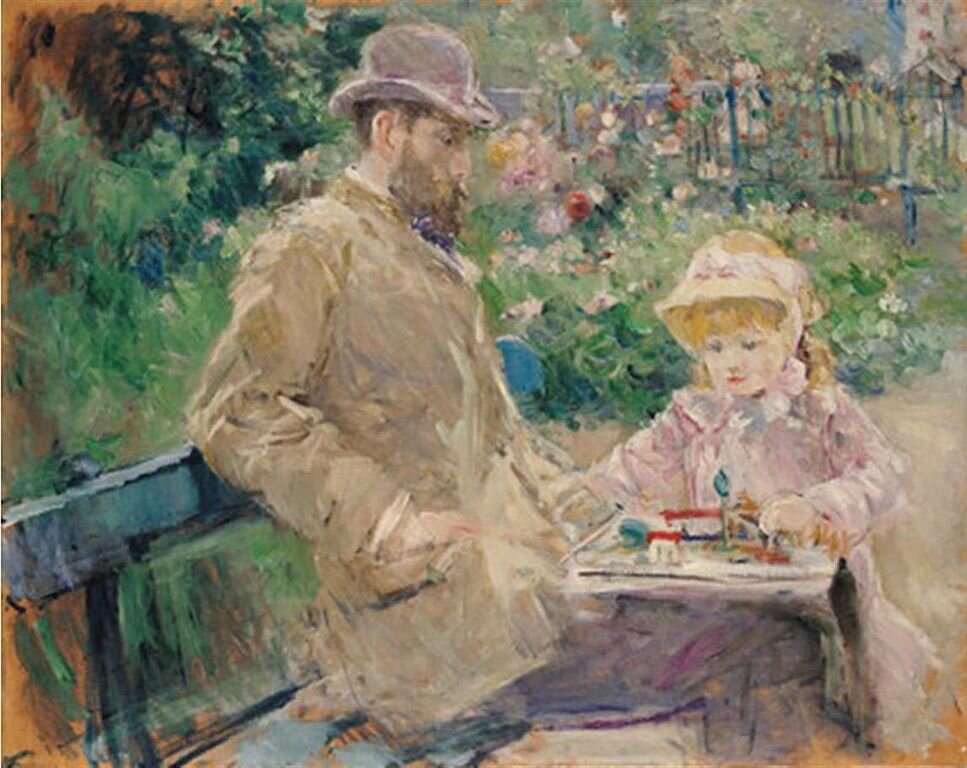Several women exhibited with the Impressionists, the best known are the French gentlewoman, Berthe Morisot, and the American expatriate, Mary Cassatt. In paintings by Berthe Morisot, we experience Parisian life as an upper-class woman—the expectations for marriage, socialization within an apartment, and life as a working-class mother. While we may think that we the life of a woman was incredibly conscripted, Morisot also shows women both active outdoors and absorbed in intellectual pursuits. She also depicts her husband, Eugène Manet (Edouard Manet’s brother), directly engaged as a parent.
Berthe Morisot, Eugène Manet and his Daughter at Bougival, 1881. https://upload.wikimedia.org/wikipedia/commons/archive/3/33/20160422163615%21Eugene_Manet_and_His_Daughter_at_Bougival_1881_Berthe_Morisot.jpg
Cassatt had not only the courage and the financial means to re-settle as an artist in Paris, she also enjoyed family support, especially of her mother. However, through her actions and her career, she challenged gender stereotypes. While friend Edgar Degas often had Cassatt pose as a model for his works, he depicted her posture and attributes in ways that challenged gender norms, depicting her in a public space, taking a more masculine stance or leaning on a man’s umbrella. These conventions likely cued viewers, accustomed to anti-suffrage caricature conventions, to Cassatt’s independence and non-conformity. Like Morisot, Cassatt not only depicts women who read, but also who drive or ride the omnibus through town. By the 1890s, she also becomes quite well-known for her depictions of women and children. Contemporary viewers must understand these works within the context of a push from several intersecting organizations to encourage women of all classes to become more involved in childcare and a movement to discourage the practice of hiring wet nurses.
Mary Cassatt, A Woman and a Girl Driving, 1881. https://philamuseum.org/collections/permanent/104447.html?mulR=1882744251|1

